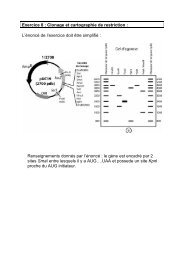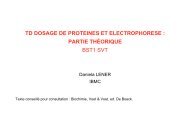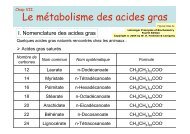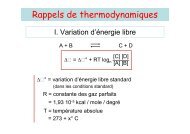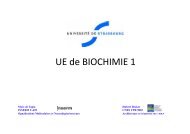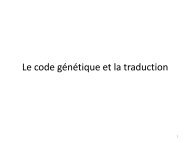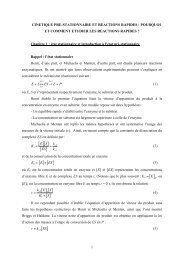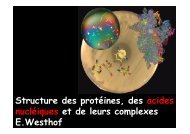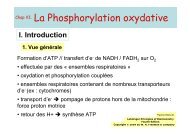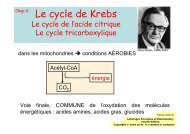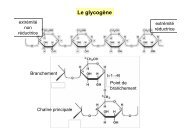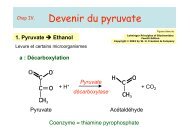Table Of Contents
Table Of Contents
Table Of Contents
Create successful ePaper yourself
Turn your PDF publications into a flip-book with our unique Google optimized e-Paper software.
“Display Run Parameters” displays the current run parameters for the run in progress.<br />
This button is available only when the iTC 200 is in a non-idle state.<br />
“Update Run Parameters” updates the current run parameters for the run in progress.<br />
When the ITC is in a non-idle state, this button must be clicked for the run parameter changes to<br />
take effect. This button is available only when the iTC 200 is in a non-idle state. Note: Only run<br />
parameters that have not yet been applied on the run in progress may be updated; all others will<br />
be ignored (i.e. after the stirring has commenced for an experiment, changes to the experimental<br />
stir speed will be ignored).<br />
The “Total # Injections” (500 is the maximum) sets the number of injections for the<br />
titration (ITC) experiment. The multiple-injection method requires a minimum of 10-15<br />
injections. There are no negative consequences (except the time spent) to titrating past the point<br />
where all sites are saturated, and these last few injections can be used for control heat<br />
information. The single injection method uses one single longer injection.<br />
The “Cell Temperature” box is used to set the desired run temperature for the experiment.<br />
Most runs are performed between 25°C (room temperature) and 37°C (human body<br />
temperature); although the instrument’s operating range is 2°C to 80°C.<br />
Throughout an ITC experiment, a small constant amount of power (equal to the<br />
“Reference Power” entered) is continuously supplied to the offset heater of the reference cell.<br />
This causes the DP feedback system to become positive to supply compensating power to the<br />
sample cell that will equilibrate the temperatures. During an experiment the DP baseline will<br />
equilibrate near the value entered in the “Reference Power” box. The reference power setting is<br />
often referred to as the baseline setting. The best choice for the reference power setting will be<br />
determined by the anticipated size and direction of the titration peaks. Large exotherms will<br />
require a large reference power setting (ca. 5 µCal/sec.) and large endotherms will require a very<br />
small reference power setting (ca. 0.5 µCal/sec.). When working with an unknown sample, a<br />
reference power of 2-3 µCal/sec is best.<br />
The “Initial Delay” refers to the time, in seconds, after the instrument has started a run<br />
and before the first injection. The standard parameter is 60 seconds; this is necessary to establish<br />
a baseline prior to the first injection.<br />
The “Syringe Concentration” and “Cell Concentration” boxes are a place to enter the<br />
experimental concentrations. The “Experimental Design” tab will make suggestions of the<br />
proper concentrations if desired (see section 2.2), or refer to “Calculating Concentrations” later<br />
in this section for more information. If the “Experimental Design” tab was used, these values<br />
will already be filled in. These concentration values are stored in the data file header and used<br />
for ITC data analysis. These values are used only during data analysis and an entry is not<br />
required to perform an experiment.<br />
Select the desired stirring rate from the drop down list (1000 RPM is recommended for<br />
most ITC experiments). If the solution in the sample cell contains suspended particles (e.g.<br />
agarose beads), then faster stirring may be necessary.<br />
In the “Feedback Mode/Gain” section, the three available modes are “none”, “low” or<br />
“high” (High is recommended for most ITC experiments). The feedback modes can be described<br />
as active (“low” or “high”) or passive (“none”). High gain will provide the fastest response time,<br />
while passive mode (“none”) will provide the highest sensitivity. Almost all ITC reactions will<br />
require using the high gain feedback mode. Monitoring of long, slow thermal process in the<br />
iTC 200 (i.e. kinetics, metabolic rates) might benefit from using the passive or low gain feedback<br />
modes.<br />
24



